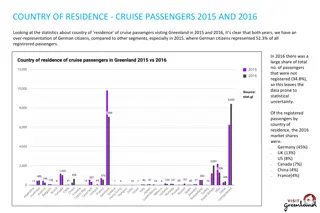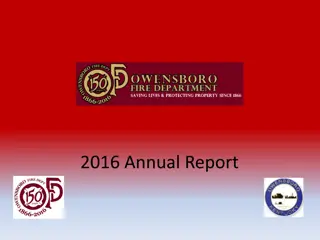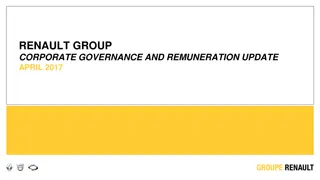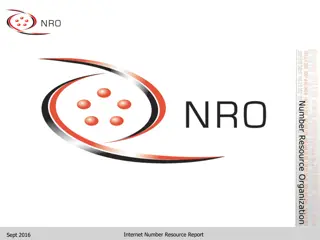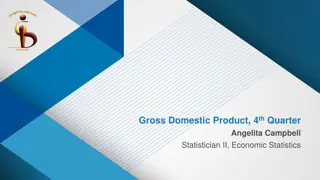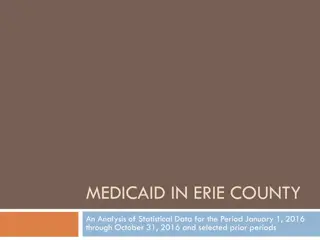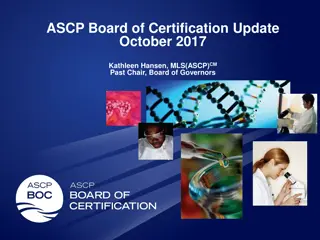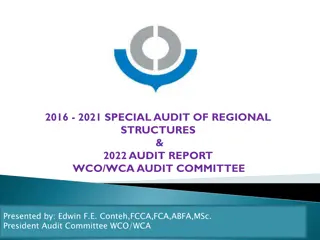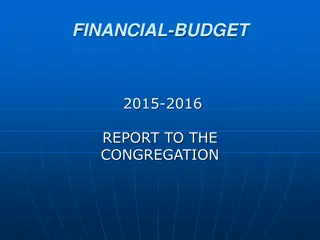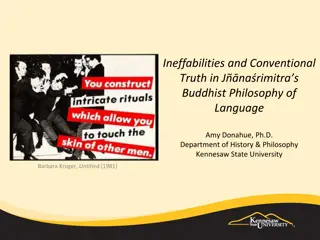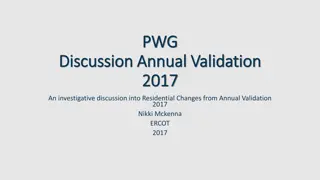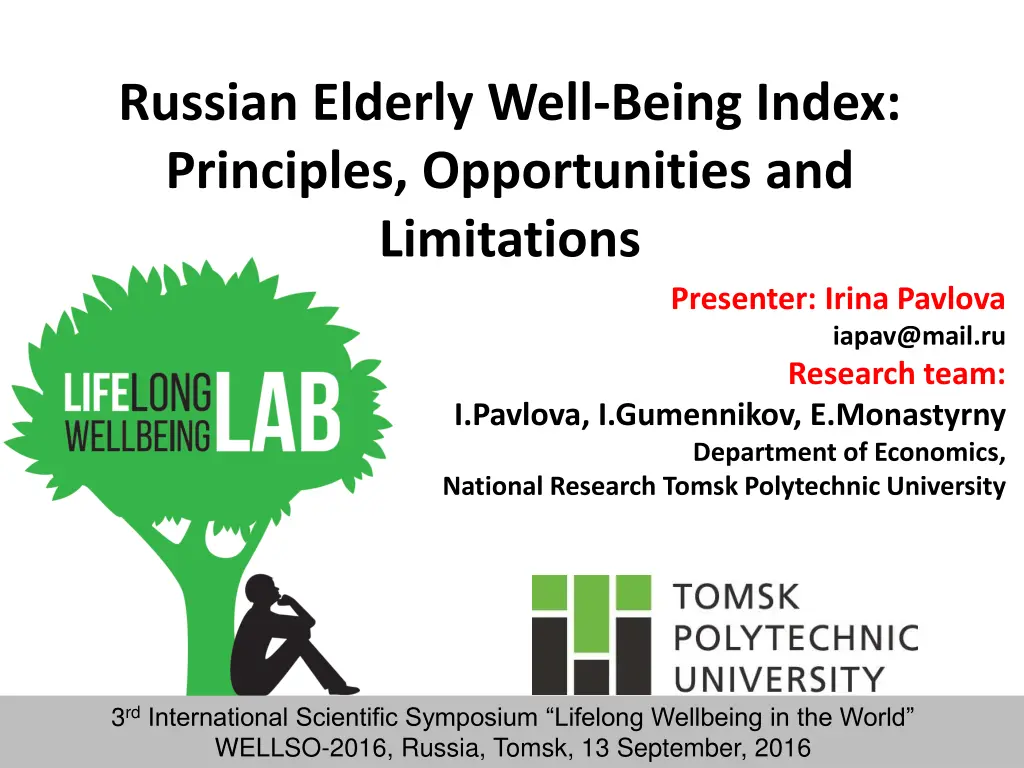
Understanding Russian Elderly Well-Being: Index Development and Assessment Trends
Explore the Russian Elderly Well-Being Index development and global trends in assessing well-being from 1990 to 2010. Discover the systemic structural model and matrix of objective and subjective indicators for a comprehensive understanding.
Download Presentation

Please find below an Image/Link to download the presentation.
The content on the website is provided AS IS for your information and personal use only. It may not be sold, licensed, or shared on other websites without obtaining consent from the author. If you encounter any issues during the download, it is possible that the publisher has removed the file from their server.
You are allowed to download the files provided on this website for personal or commercial use, subject to the condition that they are used lawfully. All files are the property of their respective owners.
The content on the website is provided AS IS for your information and personal use only. It may not be sold, licensed, or shared on other websites without obtaining consent from the author.
E N D
Presentation Transcript
Russian Elderly Well-Being Index: Principles, Opportunities and Limitations Presenter: Irina Pavlova iapav@mail.ru Research team: I.Pavlova, I.Gumennikov, E.Monastyrny Department of Economics, National Research Tomsk Polytechnic University 3rdInternational Scientific Symposium Lifelong Wellbeing in the World WELLSO-2016, Russia, Tomsk, 13 September, 2016
GLOBAL TRENDS AND UNDERSTANDING: ASSESSMENTS DEVELOPMENT (OBJECTIVE + SUBJECTIVE) 1990-2010 (political aspect) Understanding human development on only as economic growth, but also as rights, social parity and sustainability, respect to people s rights. 2013 Global AgeWatch Index demographic Global ageing Other composite well- being indices (objective +subjective): Active Ageing Index OECD Better Life Index Multidimensional Poverty Index Legatum Prosperity Index Subjective well-being assessment: WHO-5 - WHO Well-being Scale WHOQOL WHO Quality of Life Index (c 1991, WHOQOL-OLD module 2005) PGWB-S - Psychological General Well-being Index HRQOL - Measure of Health-Related Quality Life Index PWI - Personal Wellbeing Index EQOLI Elderly Quality of Life Index 2002 UN 2nd Assembly on the Ageing 1982 Academic and practice-oriented aspect: From 1961 - (LSI): Life Satisfaction Index LSI-A (20, 1961), LSI-B (12), LSI-Z (13, 1969), LSITA - Life Satisfaction Index for the Third Age (35, 1991-2006, 50+) UN World Assembly on Ageing 2
Matrix of objective and subjective indicators: practice-oriented level Domains of needs for the practical level model: (1) health and physical activities; (2) income and employment; (3) accommodation, assets and living conditions; (4) education and training; (5) social connections; (6) social activities; (7) entertainment and free time; (8) mobility. Social and Economic information Scale of interaction is represented by institutions and organizations performing functions of procurement: (1) legislation (national and regional levels); (2) budget and financial government responsibilities; (3) formal government institutions of healthcare, social welfare, education and so on; (4) non- government organizations and informal institutions; (5) close social environment (friends, neighbors, acquaintances); (6) household/family (spouses; parents, children, relatives). Needs Need 2 Need 1 Need n Micro/Macro environment Social, physiological, psychological information - Objective indicators - Subjective indicators 4
Procedure of the two-level model testing M3 M0 M1 obj M2 obj Object of analysis System level model M3 obj Analysis: decomposition Synthesis: aggregation Mnorm Practical level model M3 subj M1 subj M2 subj Objective assessment: analysis of statistics forms of national and regional level (116 objective indicators), leading to a publication of a special report on ageing in Tomsk Oblast Subjective assessment: a survey with 78 questions resulting into 324 variables (the questionnaire was designed on the basis of the matrix of subjective and objective indicators covering 8 domain of needs and 6 functions of institutional procurement; the survey embraced 400 older adults living in the Tomsk region. Normative models: the Global AgeWatch and Active Ageing Indices 5
Global AgeWatch Index 6 Source: Global AgeWatch Index 2014 Insight report
Global AgeWatch Index Overall ranking of the country in respective year, place in the ranking I. Income Security Index Value (max.100) II. Health Status Index Value (max.100) III. Employment and Education Index Value (max.100) IV. Enabling environment Index Value (max.100) 78 AW, Russian Federation, 2013 43 31,3 55,7 44,4 65 AW, Russian Federation, 2014 72,9 27,1 45,1 55,5 AW, Russian Federation, 2014: ranking of the country within the domains, place in the ranking 37 86 26 82 7
Active Ageing Index 8 Source: AAI in Brief (2014). Active Ageing Index. United Nations Economic Commission for Europe.
Basic principles for index development Three basic principles for developing a composite index (Korchagina , 2012) : data should be available and measurable, including on the regional level, presented in official documents and regularly updated; the indicators/variables should be simple enough for interpretation and reflect the actual processes and their dynamics; the indicators/variables must be scientifically grounded and justified, be based on international standards, can be used in econometric models to measure, assess and predict development of the present situation 9
Basic principles for index development Additional principles (Pavlova et al., 2016): possibility and necessity of heterogeneous indicators/variables aggregation in a comprehensive evaluation scale under the single methodology; indicators/variables relevance implies the validity and justification of the integration into the composite index any specific variable, indicator or a domain; adequate, fair and reasonable allocation of weights between variables, indicators and domains; needs of the elderly population non-excludability - all the needs of the elderly should be taken into account; non-excludability of territories and regions - the research and evaluation should cover and be accomplished for all the regions or territories; differentiation of regions and territories with the possibility of multi-level differentiation in Russia (federal districts, regions, territories) due to significant distinctions in socio-economic development levels; combination and usage both the objective and subjective measures; valid and fair international and inter-regional comparisons. 10
Tomsk region: some numbers At the beginning of 2014 accounts 224,400 people over retirement age (men - 60 years and older, women - 55 years and older). Compared to 2011, the number of older adults increased by 17,800 (or 8.6% increase) since the generation of 50s began to reach retirement age. During this period, the share of the older retired generation in total population of the Tomsk region increased from 19.7% to 21.0%. The population of the Tomsk region, according to international criteria, is considered to be old since the number of the people 65+ years is higher than 7% of the total population. In the beginning of 2014 this figure was 11% (every ninth resident). 11
Russian Elderly Wellbeing Index (REWI) data sources Limited number of regions Russian Longitudinal Monitoring Survey (Higher School of Economics, 38 regions) The Eurobarometer survey (RANEPA, 10 regions) All regions Comprehensive monitoring of living conditions (2014) Russian Federal State Statistics Service website, Older generation section 12
REWI domains structure: 4 dimensions Economic Social Health 3.1. Life expectancy in old age 3.2. Sports activities 3.3. Health status self- assessment 3.4. Chronic diseases 3.5. Bad habits (smoking and drinking abuse) 2.1. The level of education 2.2. Help from children living separately 2.3. Internet use 2.4. Membership in voluntary organizations 2.5. Visiting events ( Going Out ) 1.1. The real size of pensions 1.2. The ratio of the average size of pensions to the subsistence minimum 1.3. The employment rate above the working age 1.4. Paid work or any employment over past week 1.5. Satisfaction with the job Regional and government procurement 4.1. Living condition 4.2. The quality of social service institutions 4.3. Social payments 4.4. Opinion of the residence place 4.5. Problems in the residence area 4.6. Medical services availability 13
REWI: ECONOMIC DIMENSION Top-10: Chukotka, Magadan, St.Petersburg (city), Khanty- Mansiysk, Yamalo-Nenetskiy, Murmansk, Sakha, Leningradskaya Oblast, Udmurtiya, Moscow region 14
REWI: SOCIAL DIMENSION Top-10: St.Petersburg (city), Moscow (city), Sevastopol (city), Sakha, Arkhangelsk, Kaliningrad, Khabarovsk, Moscow region, Yamalo-Nenetsk, Tver 15
REWI: HEALTH DIMENSION Top-10: Kirov, Vladimir, Chuvashiya, Tchechnya, Magadan, Karachaevo-Chekessiya, Adygeya, Dagestan, Udmurtiya, Zabaikalskiy Krai 16
REWI: REGIONAL DIMENSION Top-10: Moscow (city), Yamalo- Nenetsk, Nenetsk, Tyumen, Chukotka, Sverdlovskaya Oblast, Khanti-Mansiysk, St.Peterburg (city), Karelia, Chechnya 17
REWI: 4 domains Top-15: Yamalo-Nenetsk, St.Peterburg (city), Moscow (city), Chukotka, Khanty-Mansiysk, Sevastopol (city), Moscow region, Sakha, Karelia, Chechnya, Leningradskaya Oblast, Tatarstan, Sverdlovsk, Samara, Tyumen, Kaliningrad 18
REWI: FEDERAL DISTRICTS 0 50 100 150 200 250 Ural 50.20011555 43.56380291 38.75321712 61.20241587 Central 48.73260922 38.22109326 38.77670777 65.06148618 Northwestern 50.18443349 46.21737321 37.15323361 53.60794464 Russia, average 48.4443731 40.6582956 39.65835929 57.29108634 ECONOMIC Far East 51.80819959 40.69074779 37.46366101 49.59331022 SOCIAL Volga 49.5189995 37.32133449 41.21181007 52.15364291 HEALTH Crimea 36.12561086 48.85660145 41.18177926 54.06573079 REGIONAL Southern 44.4489308 39.86347274 40.23197601 50.24648393 North Caucasian 45.62138311 32.31768303 48.51039173 47.9835115 Siberian 48.42209092 39.53863305 33.85117076 48.26640177 19
Thank you for your attention! Irina Pavlova, iapav@mail.ru Department of Economics, Lifelong Wellbeing Lab, Tomsk Polytechnic University 20

